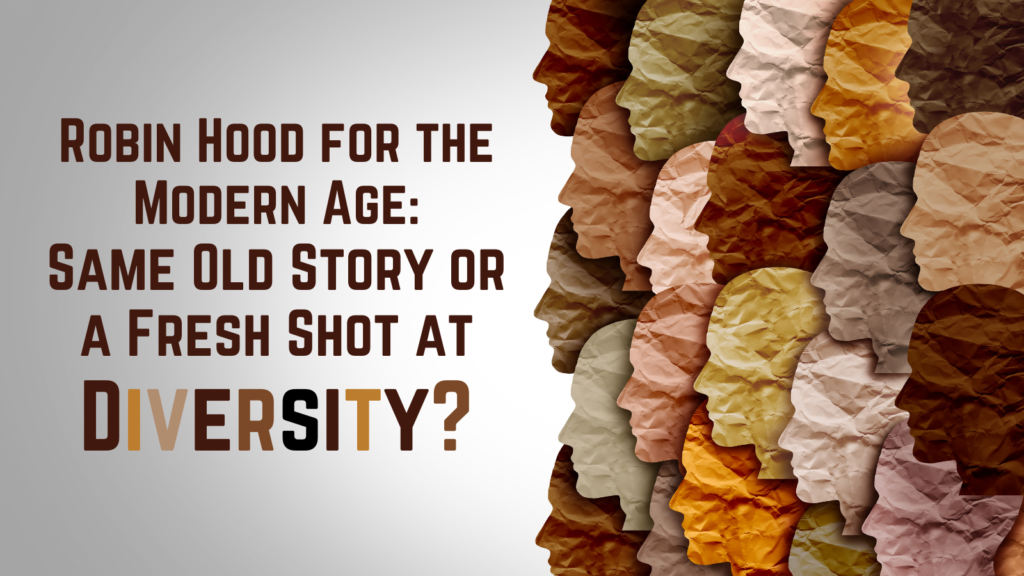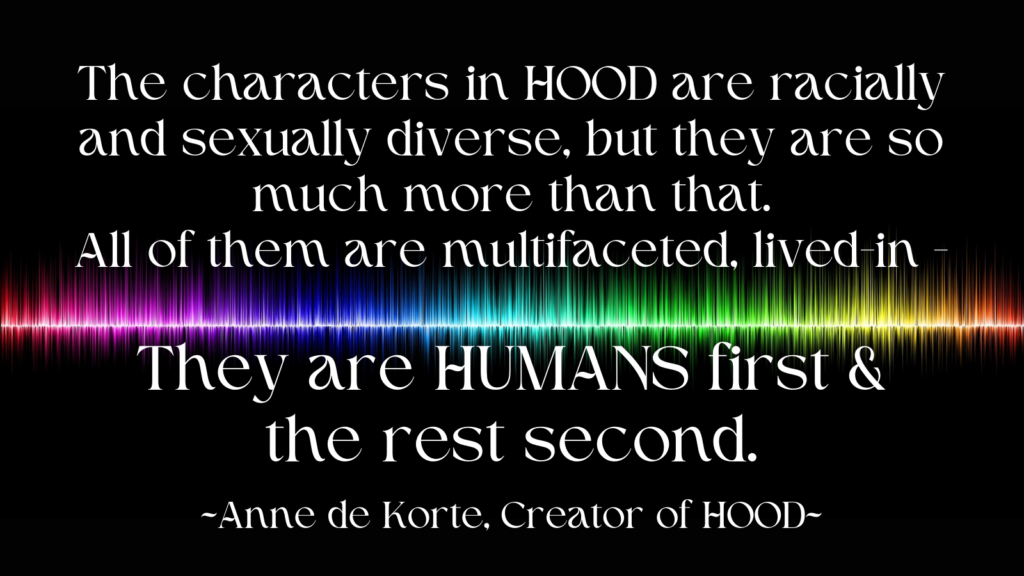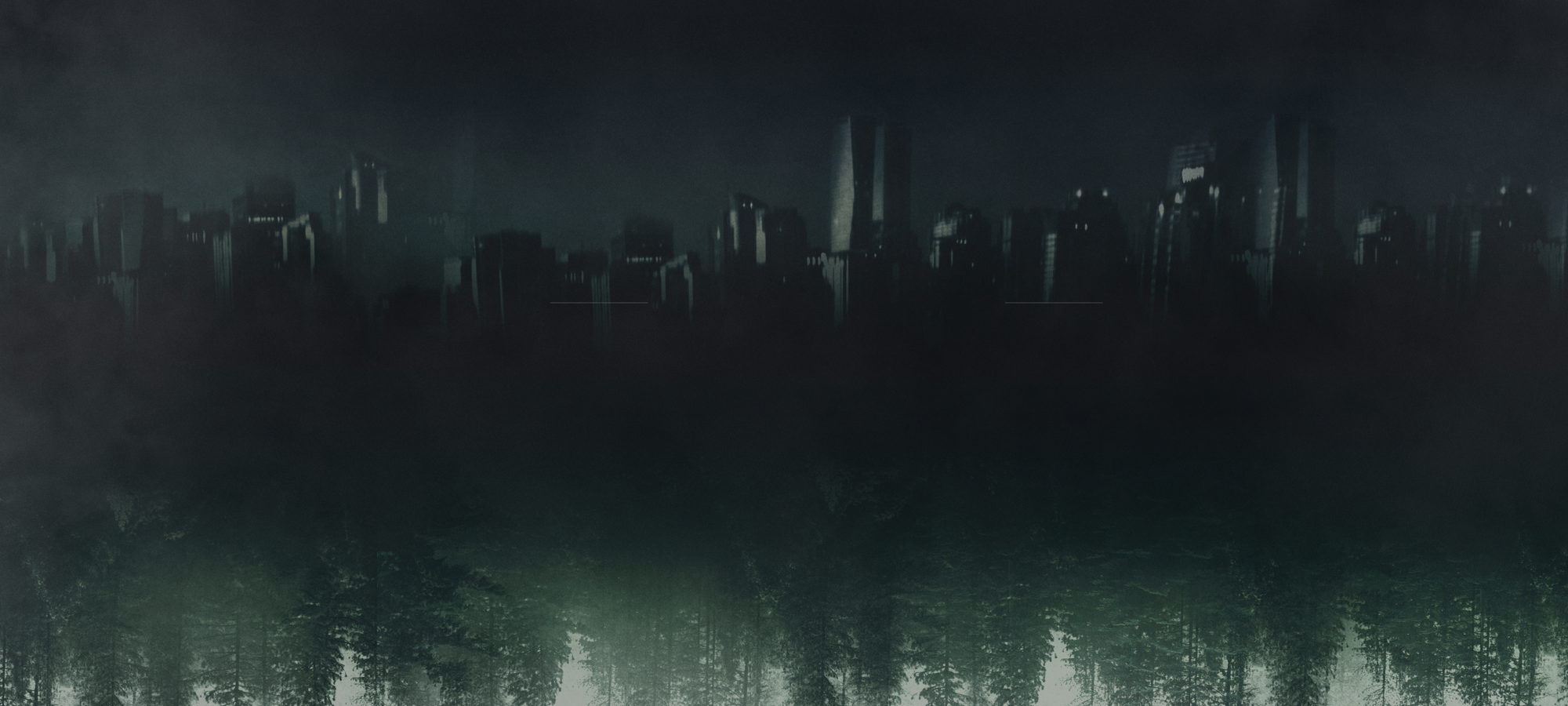Written by Bethany Baker

We have all heard the usual tick-list of over-represented characters in media: white, straight, cis-gendered, male. The terms “diverse” and “underrepresented” describe characters that deviate from this list (e.i. anyone not white, straight, cis-gendered, male – and especially anyone that is not all of these things, all at once).
HOOD’s alternative universe de-centres struggles of race, gender, and sexuality. This means that different groups and identities exist in HOOD, but the characters and storyline are not impacted by real-life discrimination. Instead, the HOOD universe showcases gender equality following a matriarchal history. Different societies and cultures exist through peace, war, and the fight for resources, but there is no racial hierarchy. Powerful women have used their magical powers to overthrow the church that persecuted them for heresy, and, generations later, their female-led society now thrives. (Want to find out more about how magic altered the timeline with the World of HOOD? Check out the Clash of the Cousins podcast)
So yes, the characters in HOOD are diverse – but is it really enough to simply have diverse characters, or is more needed beneath the shiny surface of “inclusivity”? How does HOOD achieve this?
Simple Representation or Something Deeper?

By now in the media, representation means more than simply seeing diverse characters, we want to feel them. Their emotional rollercoasters, their sharp wit and charm, their backstory, drama, and, well, their mundanity too. The ordinary-ness of their existence in a story.
People want to see diverse characters be more than the sum of their parts, to have their personalities and contributions to a show be more than classic struggles and stereotypes about their identity.
Stories about real oppressions are important and definitely still have an important place in media, but we also want to experience diverse characters that do more than struggle with their identity and oppression. We want to see ourselves, however that looks, represented in our true, complicated, and multidimensional nature. Sometimes, we turn to the media for a break, for something different from the stresses of real life. Underrepresented people deserve to take those breaks AND see characters like themselves in the process.
Thankfully, this trend has already begun with huge momentum and success, and HOOD is the next big success in the making with its female-led, dystopian fantasy.
Do inequalities still matter? Absolutely. The importance of telling the stories of real oppressed groups is not only important, but highly necessary. HOOD, and shows like it, do not aim to replace other educational or true-to-reality media, or label them as irrelevant. Instead, HOOD exists alongside these shows. HOOD is a fantasy. An escape to something different than the undeniable problems of real life, and this can exist alongside other stories. There is not only room for both, but demand for it too.
Old Tropes or New Drama?
The classic tale of Robin Hood has been adapted before, but HOOD catapults a brand new universe of magic, dystopia, and, of course, complex female, LGBT+, and racially diverse characters. (Read more about the amazing female characters in HOOD in a previous post) The HOOD universe is one in which equality amongst races, sexualities, and genders is pre-established. Characters are fully-fledged people with emotions, opinions, goals, dreams, and choices that are unhindered by their sexuality, gender, or skin colour.
So who are the complex characters of HOOD? Let’s take a look at two of our leading women, unconstrained by real-world discrimination.
Robyn Loxely: Our female, bi-sexual spin on the classic Robin Hood character. After Robyn loses her ex-lover Marian to her nemesis Phillipa, HOOD gives us an LGBT twist to the classic love triangle without the oversexualisation of queer women. These are real relationships (dramas and heartbreaks) between realistic women. Although Robyn has romantic relationships with both men and women, their specific genders do not influence the tensions between characters. Robyn’s bisexuality is not questioned, proven or a negative influence in her romantic relationships with different genders.
Want to get to know Marian and Philippa better? You can watch their character introductions too!
Alana Dale: As seen in her character introduction, Alana is the first Hycathae and black female character introduced in HOOD (but she certainly won’t be the last!). With HOOD’s Hycathic powers passed down exclusively from mother to daughter, Alana receives her magic from the grandmother and mother who raised her before her adoption into a rebel family in Nottingham’s Outer Circle.
We follow Alana’s adolescent journey as she figures out her place in HOOD’s harsh world; fighting for her beliefs, grappling with a desire to be both connected to and independent from her adoptive siblings, and longing to be accepted as she battles with her magical abilities. The full extent of Alana’s powers, and her internal battles, remain unknown (for now).
Utopia or Dystopia?
The World of HOOD can look dystopian at times. Climate change has already changed the fabric of the world, resulting in poverty and food shortages. The citizens of Nottingham are ruled under martial law and live in fear of committing even the smallest crimes and being sent to the pits to fight for their lives. But that is the “present”, not the totality of the world of our story.
The reason gender, sexual, and racial discrimination don’t exist in the story world of HOOD isn’t because it never existed, but because those battles have already been fought. (Often literally) Though at first glance it may look like HOOD is saying that if only women were in charge of the world, everything would be better, but this is far from the truth. The Acorn Uprising was an important conflict in the history of our world where men fought for and won greater equality after centuries of being treated as lesser. The Age of Equality followed, a time when there were unparalleled technological advances made in tandem with Hycathic magic. And going even farther back, the expulsion of the Catholic church from Europe meant that horrific events like the Spanish Inquisition never took place.
HOOD is not simply incorporating diversity for diversity’s sake, but rather reinventing the history of Europe at a key point in the timeline and showing us a world that is both darker and brighter than our own.
What do you think?
What groups of people are you most excited to see represented in HOOD? Are there other examples of sci-fi and fantasy series that go more than “skin deep” when it comes to diversity?

